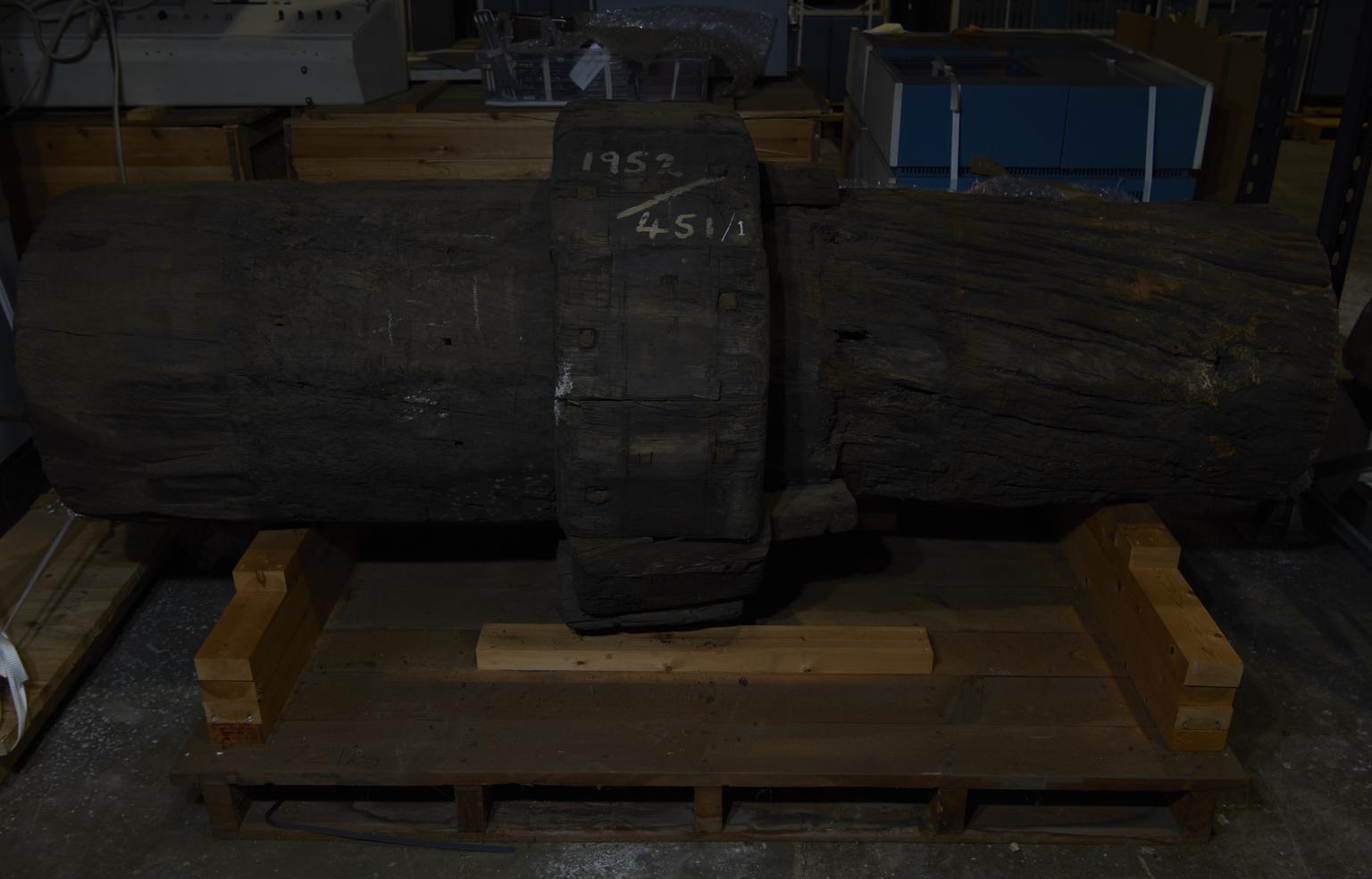
Oak Trunk Axle with Wooden Boss
Rough-hewn oak trunk axle with wooden boss bolted on for mounting large hammer cam ring
The two tilt hammers, camshaft, gearing and drum from Holbeam Hammer Mill Devon
This machinery, which is thought to date from the eighteenth century, was removed from Holbeam Mill, near Newton Abbot, Devon, where it was in use until 1942.
The two tilt hammers were operated by a pitchback water wheel, 1 2 feet in diameter and just visible through the small door, which received water from the River Lemon through an open leat and wooden launder. The axle is a rough-hewn oak trunk, on which are wedged two cast-iron cam-rings, the cams of which raise the hammers by pressing down their ironshod tails. On disengagement the hammers fall back on the anvils.
This mill was used for the manufacture of thatchers' sickles, hedging hooks and grass sickles ; and there is a tradition that in the days of sailing fishermens' knives and fishing hooks were made for export to Newfoundland.
In images taken in the mill while it was working, the smith is seen at work at the forging hammer while the lighter hammer, used for finishing, is propped up in order to disengage it from the cams. The frequency of the hammer blows was controlled by adjusting the opening of the sluice over the water wheel, which is connected by levers with the linked rods, which end in a perforated plate. This was secured to whichever hammer head was not in use, by a peg. A second water wheel was used to drive the bellows of the forge.
The bevel-gear ring between the cam rings and the water wheel drove a bevel pinion. This gave motion through spur gearing, which is not shown, to a large drum, which was used to drive through belting the woodturning lathe for making the handles of the tools.
Water-driven hammer mills were widely used from the Middle Ages until the advent of the steam hammer in the mid nineteenth century, but very few of them now survive.

Rough-hewn oak trunk axle with wooden boss bolted on for mounting large hammer cam ring
Cast iron axle end with small hammer cam wedged onto it
Cast iron water wheel boss and end cap and spigot. A cast iron plate (not seen) bolted to the inner face of the boss to which was bolted the wheel spokes.
Main axle bearing plumber boxes. 1 for water wheel side, mounted on wooden frame (Made by Museum); the brasses are missing. 1 bearing plumber box with bottom brasses
Large hammer cam.
Main axle Bevel gear. This was the first gear in the drive chain to the wood turning lathe.
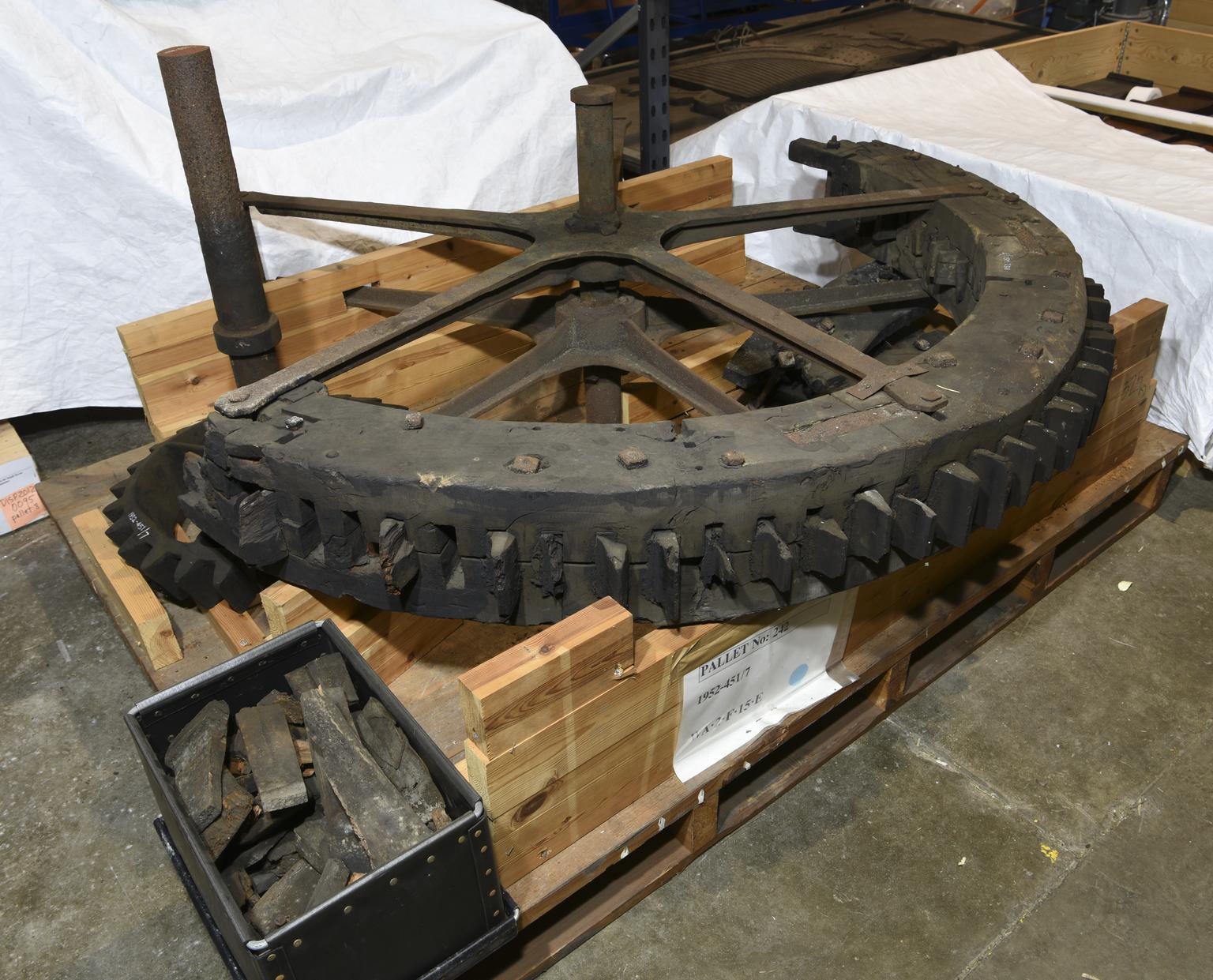
Cast iron toothed bevel wheel and axle and 6 foot diameter 80T wooden toothed wheel. The axle has been cut and the large wheel is in segments and incomplete
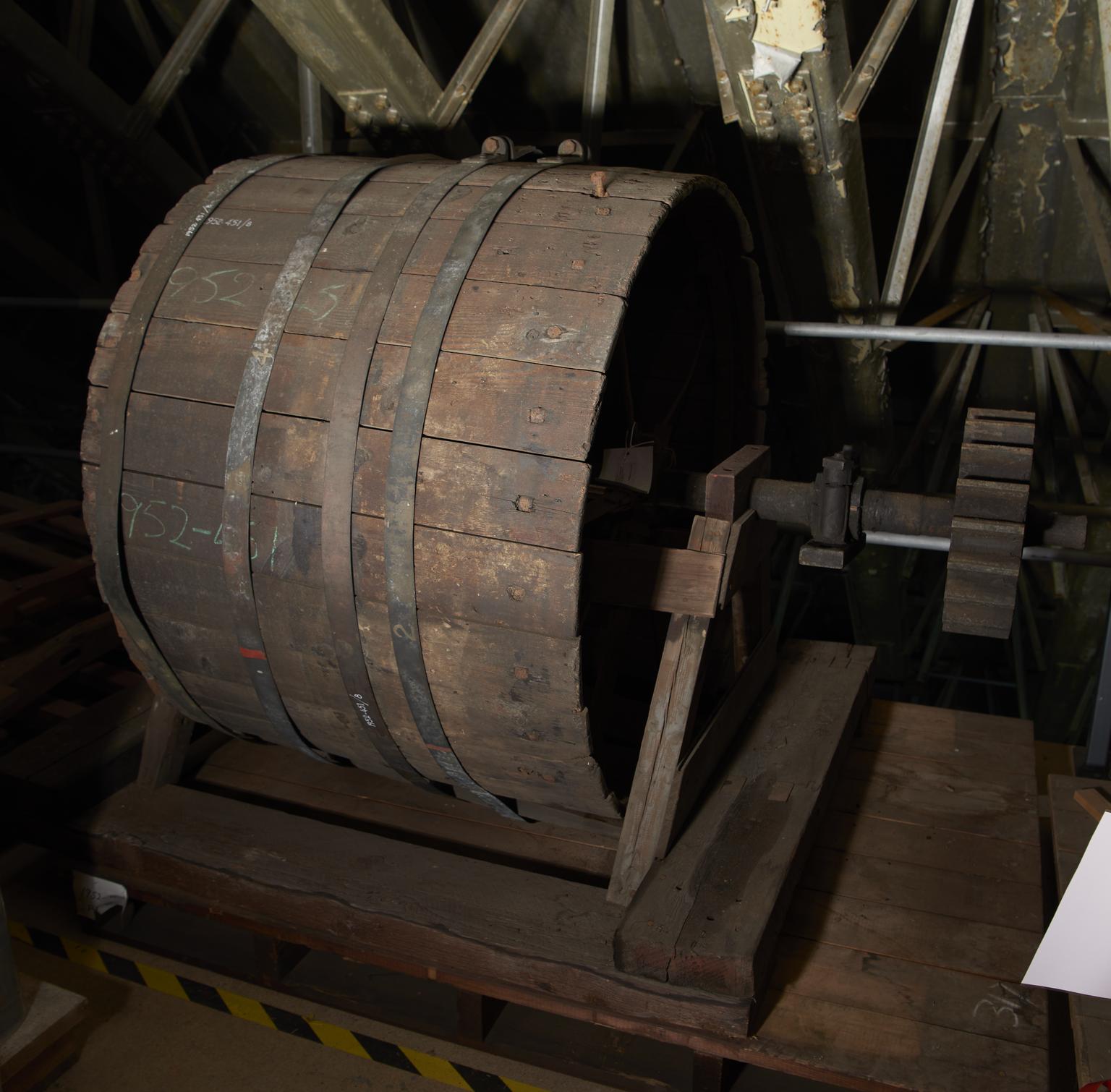
Four foot diameter wooden drum on CI axle with 2 complete 3" diameter plumber block bearing and 18 toothed cast iron pinion (driven by item 7). 4 steel bands for fixing around girth
Two bearing blocks with brasses, one on a wooden block with bearing stool (both for item 7). Complete with a lever for moving axle to disengage small bevel wheel of item 7 and a guide bearing to retain the break

1 heavy hammer complete with poll and fulcrum and top stop. 1 finishing (light) hammer with poll fulcrum and top stop. Both with tups keyed into position
Two pairs of trunions for the hammers mounted on wood block frames.
Two cast iron plates to hold wooden blocks to act as buffers when hammers are at top of swing with a gag (to support hammer in up position when not in use). Note : a second shorter gag exists but not photographed
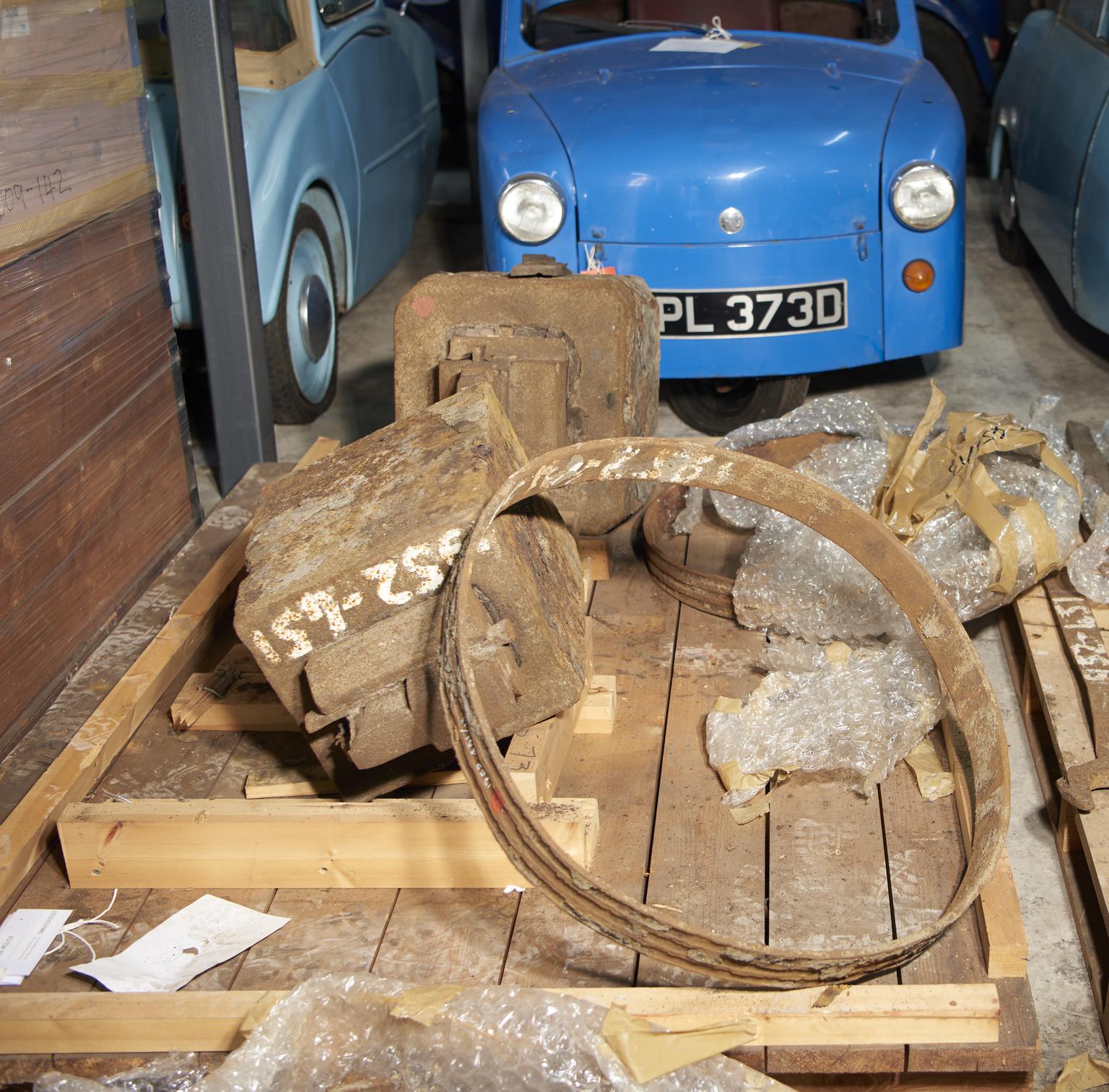
Two anvils with tups in place, marked large and small hammer. 2 rings for base of anvils see post card "Holbeam Mill"
Spare poll for large hammer
Two boxes of wooden blocks for use as wedges etc. and 8 steel shim plates
Two boxes of iron and steel plates for use as wedges
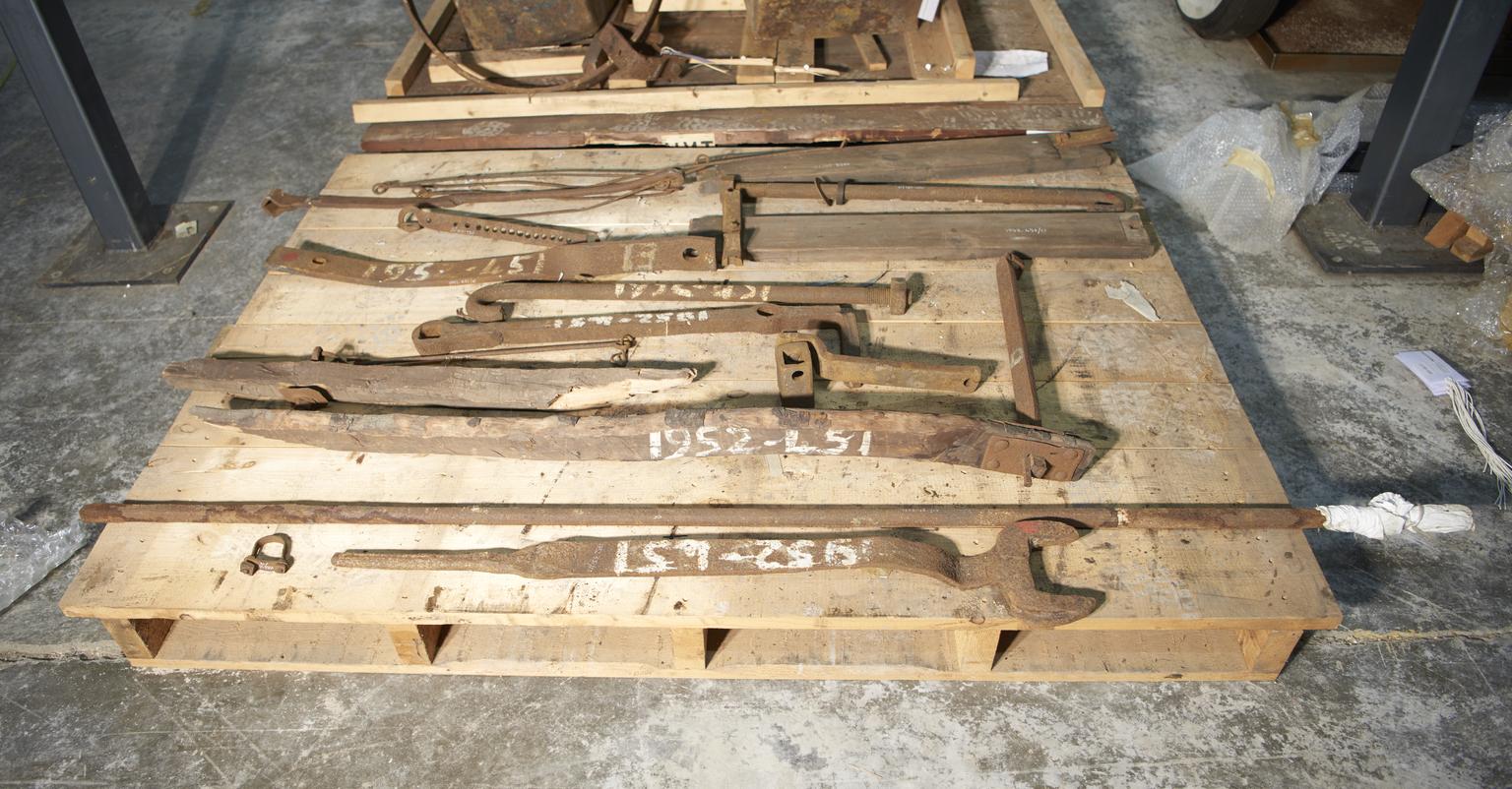
Items believed to be component parts of the speed control linkage to the sluice gate and 1 spanner & plate strap for retaining item 11 in position (see photo tech file). 1 cranked square bar used as support for trunions. Item 11. 1 hinged bar & block with shaped end probably used as tool. 2 wood boards of unknown use
Metal parts associated with the Mill mechanism including long bolts, nuts, brackets, straps, circular plates, stakes etc
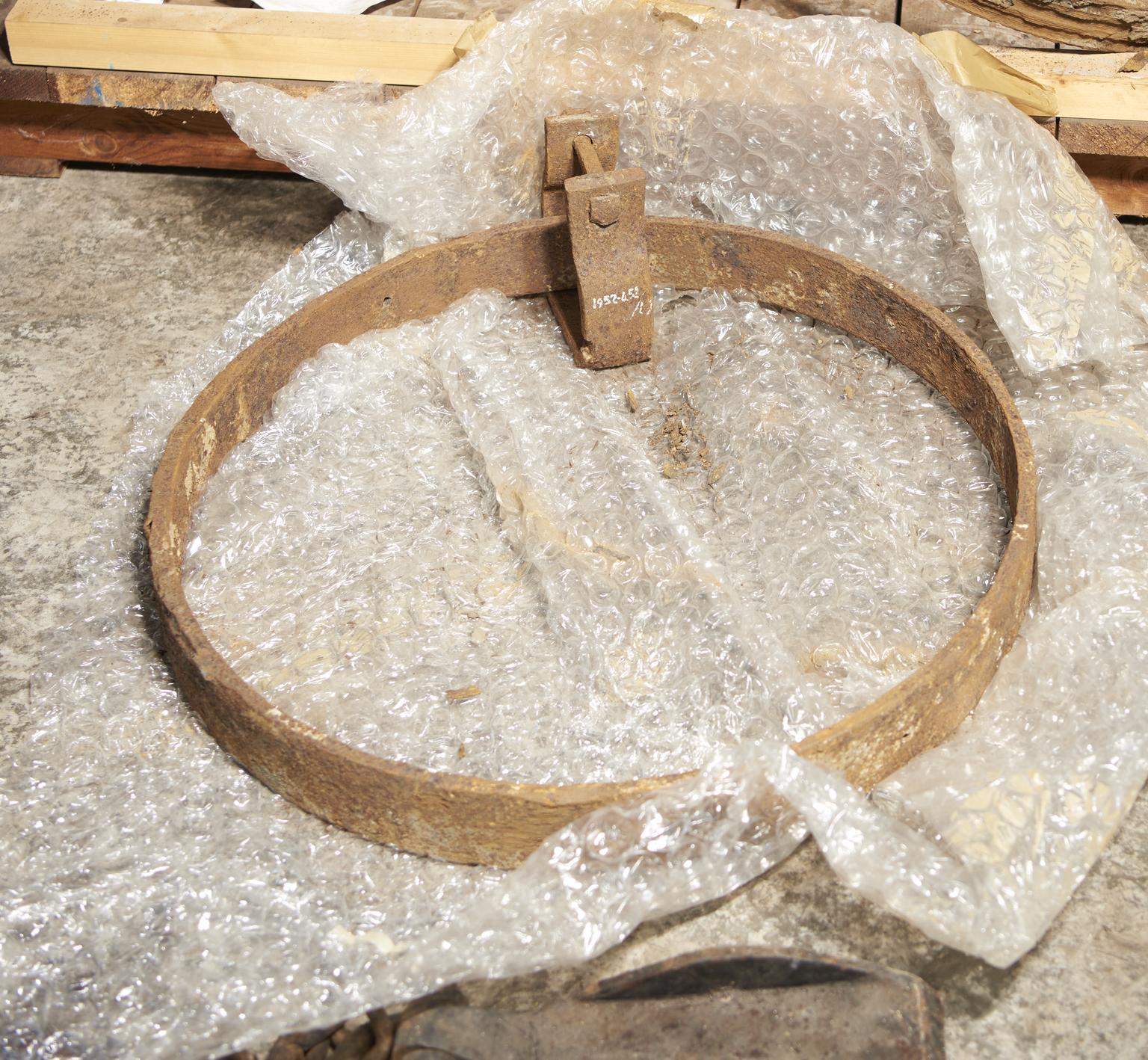
Ring and bracket of unknown purposes but fit axle